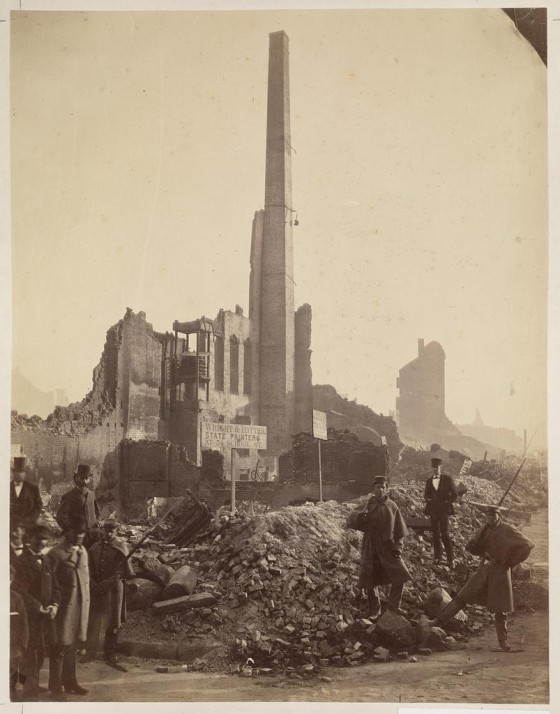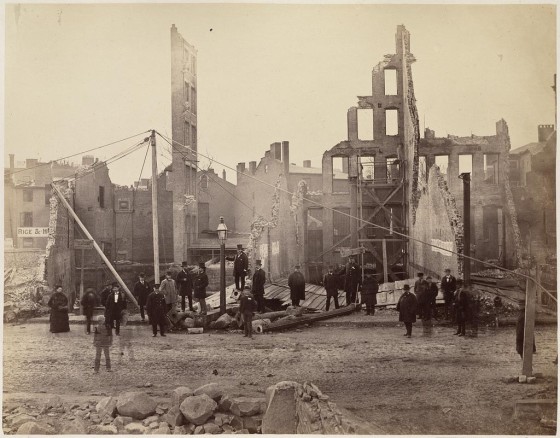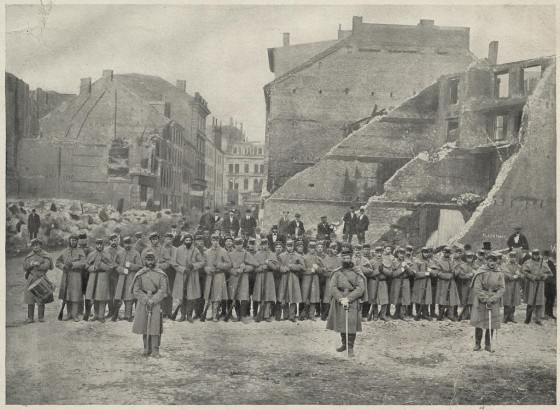Experts have deduced that the fire began in the basement of a warehouse on the corner of Kingston Street and Summer Street, at approximately 83–85 Summer Street. In thisparticular area, most of the buildings were dedicated to retail or used as warehouses. The warehouse that first caught fire housed dry goods. From the basement, the flames spread to the wooden elevator shaft in the center of the buildingand moved up the floors, fuelled by the flammable fabrics in storage. Finally, the building’s wooden mansard roof caught on fire and the flames were able to spread from rooftop to rooftop down the street. The heat become so intense that stone facades shattered.The fire spread through most of Boston's financial district which became known as the "burnt district." The glow of the fire was noted in ships' logs by sailors off the coast of Maine.
Citizens and firefighters alike worked to stop the fire. Along Washington Street, wet blankets and rugs were said to have been used to cover buildings to prevent the fire from spreading to the Old South Meeting House, the church in whichthe Boston Tea Party was planned. Some citizens and firefighters climbed to the roof of the meeting house to put out sparks. Most accounts of the fire credit the Kearsarge Engine 3 of Portsmouth, New Hampshire, with saving Old South Meeting House. The effortsto save this historic landmark finally halted the fire at the corner of Washington and Milk Streets, around midday on November 10.
These photos are sourced from the Boston Public Library.




















































